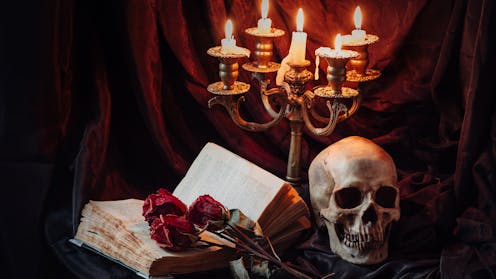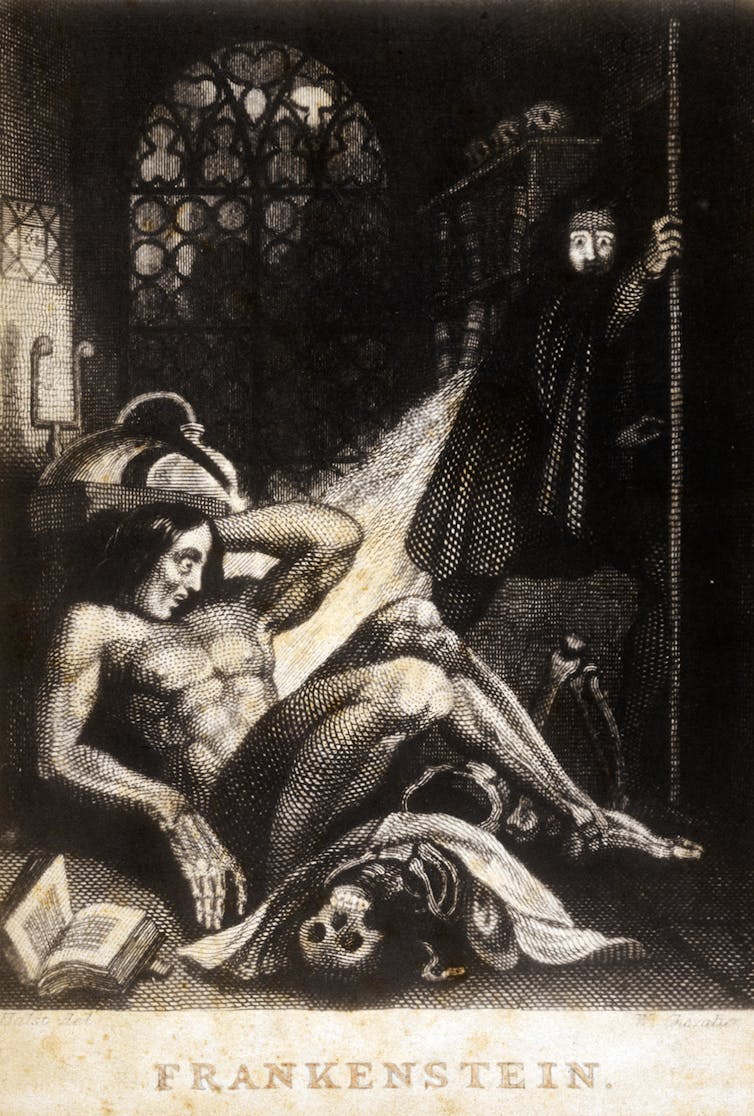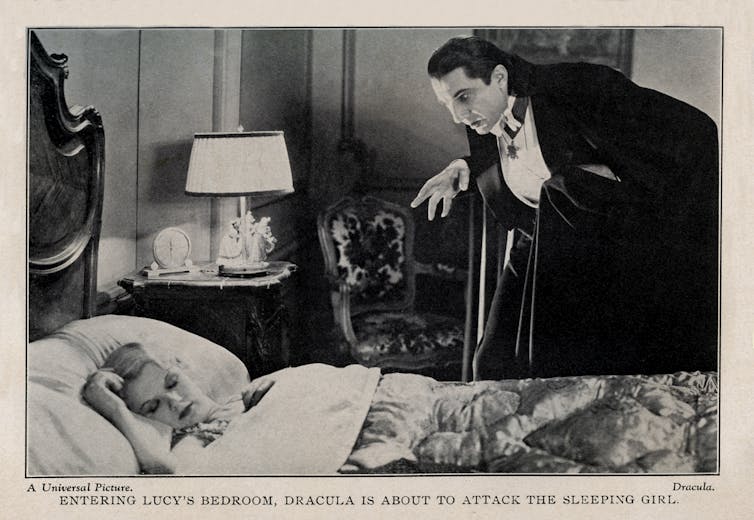From ‘Frankenstein’ to ‘Dracula,’ exploring the dark world of death and the undead offers a reminder of our mortality
- Written by Molly Ryder Granatino, Teaching Assistant Professor, English department, University of Tennessee
 Students consider their own mortality in a literature course on death and dying. iStock/Getty Images Plus
Students consider their own mortality in a literature course on death and dying. iStock/Getty Images PlusSpooky decorations of ghosts and skeletons will soon be returning to people’s doorsteps ahead of Halloween – but year-round, I am thinking about literary representations of death and dying.
I am not alone. For centuries, death has been a topic of fascination for authors and readers alike. My own research focuses on death in the Victorian era, a period of British literature extending from 1837 to 1901, but what is it about the subject of death more broadly that both attracts and repels?
When I had the chance to propose a special topics course in literature in fall 2024, I knew I wanted to craft a course that attempts to unpack why the topic of death is fascinating for people to both write and read about. Happily, my proposal was accepted, and I am currently teaching a course called “Death, Dying, and the Undead.”
What does the course explore?
Grave robbing, premature burial, murder, terror and grief are some of the topics explored through the study of poetry, short stories and novels.
We look at how authors write about death, from the visceral horror of dying in battle depicted by Wilfred Owen in his 1920 poem, “Dulce et Decorum Est,” to the devastating intimacy of loss in Edna St. Vincent Millay’s 1928 poem “Dirge Without Music” – and every death-related theme in between.
Students also explore themes of madness, mayhem and sudden death in 19th century Gothic and 20th century Southern Gothic short stories. In these stories, death is often figured as an interruption, an unexpected event that occurs when characters are busy doing other things.
It is futile to attempt to hide from death, a fact illustrated by Edgar Allan Poe in his 1842 short story “The Masque of the Red Death.” In this story, Prince Prospero, the prince of an unnamed region, tries to evade the “Red Death” by abandoning his people and isolating himself and other noblemen in a fortified abbey. But death finds them there – “And Darkness and Decay and the Red Death held illimitable dominion over all,” as the story goes.
Death is inevitable, but cannot always be anticipated. In Flannery O'Connor’s 1953 short story “A Good Man is Hard to Find,” an entire family is murdered by an escaped criminal called The Misfit in the midst of a mundane family road trip. As they are marched into the woods one by one for execution, their disbelief mirrors the reader’s: This can’t really be happening, can it?
Finally, we end the semester with novels about continued bodily animation after death – including Mary Shelley’s 1818 novel, “Frankenstein,” and Bram Stoker’s 1897 novel, “Dracula.” This unit is particularly interesting to my students majoring in forensic anthropology – meaning the recovery and examination of human remains. Some of these students spend time working at the University of Tennessee’s “body farm,” where they study donated human remains.
The students unite their understanding of inevitable bodily decay with literature that imagines the opposite – bodies that either don’t break down or can be reused. Class conversations here range from how bodies are treated after death to 19th century scientific advancements and how authors creatively imagine the possibility that a body could be reanimated after death.
 An illustration from the second edition of the horror story ‘Frankenstein’ was published in London in 1831.Fototeca Gilardi/Getty Images
An illustration from the second edition of the horror story ‘Frankenstein’ was published in London in 1831.Fototeca Gilardi/Getty ImagesWhy is this course relevant now?
As Halloween reminds people annually, everyone is going to die someday. This knowledge, paired with literature attempting to navigate the great unknown that yawns ahead, encourages students to reflect on mortality, personal values, different perspectives and how they want to live. As the poet and novelist D.H. Lawrence writes in his 1932 poem “The Ship of Death,” “We are dying, we are dying, we are all of us dying/and nothing will stay the death-flood rising within us.”
What’s a critical lesson from the course?
While an entire class dedicated to literary representations of death may appear morbid, a focus on death and dying provides an excellent jumping-off point for an exploration of what it means to be human, with all of our worries, hopes, longings and dreads. Ultimately, this dark and foreboding-sounding class is spirited and life-affirming.
 Students in this course read the Gothic novel ‘Dracula,’ as depicted in the 1931 film.Culture Club/Getty Images
Students in this course read the Gothic novel ‘Dracula,’ as depicted in the 1931 film.Culture Club/Getty ImagesWhat will the course prepare students to do?
This course prepares students to critically think about challenging subjects, like the literary portrayal of the death of a child or suicidal ideation. I facilitate the class, but the students’ incisive reading and observation drives the discussion. Students offer various interpretations and arguments informed by their own unique perspectives on loss, grief, memory and finite lifespans.
The class also prepares students to boldly tackle any literature assigned to them. Prior to each class session, students annotate the designated text. They mark it up with pens and pencils – or the digital equivalent – defining words, drawing in the margins, noting metaphors and themes.
By practicing close reading and annotating in this way, students gain confidence in engaging with a literary work and offering their own critical arguments in their written assignments.
Uncommon Courses is an occasional series from The Conversation U.S. highlighting unconventional approaches to teaching.
Molly Ryder Granatino does not work for, consult, own shares in or receive funding from any company or organization that would benefit from this article, and has disclosed no relevant affiliations beyond their academic appointment.
Authors: Molly Ryder Granatino, Teaching Assistant Professor, English department, University of Tennessee

